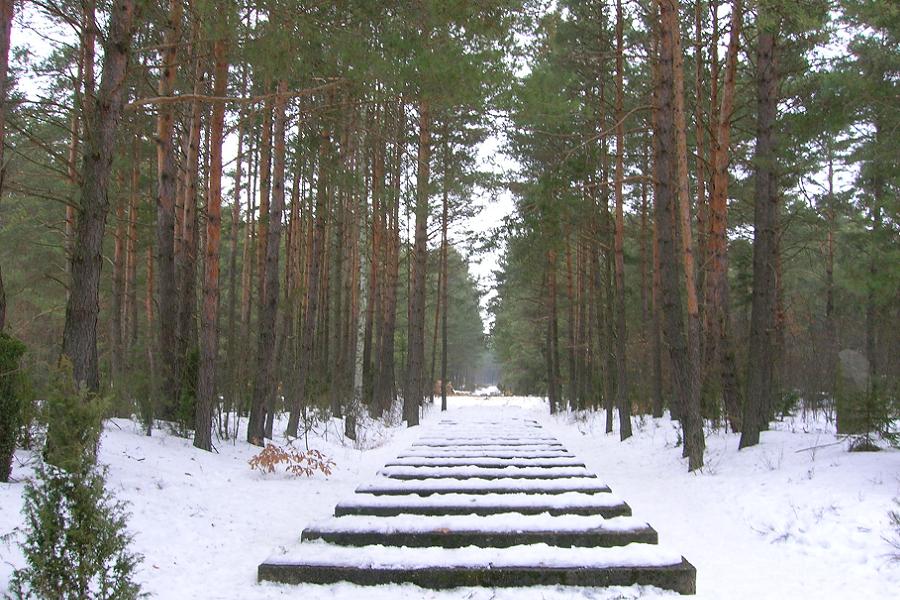Cleaning Out Treblinka

Wikimedia Commons/Public Domain
Warsaw uprising survivors arrived at Treblinka at the worst time imaginable. The camp, which had opened in June 1942 to kill on an industrial scale, was in the process of closing down just a year later.
By the spring of 1943, killing operations had mostly shifted to the much bigger facility at Auschwitz, and Treblinka’s approximately 1,000 Jewish inmates had been tasked with digging up something like 800,000 corpses buried at the site and cremating them.
Everybody at the camp knew what the disinterment meant: when the last bodies were dug up, the camp would be liquidated. All 1,000 inmates expected to be killed after they finished burning the dead.
What makes this operation stand out against the general horror of the Holocaust is not the death toll; it’s the obscenity of it. Large steam shovels scraped dirt away from the top of the mass grave, which was positioned just behind the main gas chamber. After the dirt was removed, work details ran down into the pit to shovel away the last of the canopy while other workers wrestled bodies loose and carried them up the ramp on wooden carts.

Holocaust Research Project
In the East, Einsatzgruppen officers had developed a method for mass cremation. Alternating layers of bodies and 2 x 4 beams were stacked into a heap, the pile was soaked in petroleum, and more bodies were added when a good draft was established. This method was too inefficient for Treblinka; it took as many wooden beams as bodies, and Germany was chronically short on gasoline.
Instead, a German cremation expert named Herbert Floss arrived at the camp with a much cheaper method. The idea was to let the good fuel burn the bad.
A large pit was dug, and concrete pylons were set all over the bottom. Steel beams were welded together into a grill pattern and set on top of the pylons. Bodies would be sorted according to flammability, with the most combustible on the bottom and the least on top. No additional fuel was needed – just small fires under the steel beams.
For months, Treblinka workers had to dig rotting corpses out of the ground, often in pieces, and sort them. Bodies that have been decomposing for a long time have flammable gases in their tissues, so old corpses went under fresh ones in the cremation pit.
Women generally have more fat than men, and adults have more fat than the elderly, with children intermediate, so that’s how they were stacked. The fires burned every night throughout that summer and were even used as checkpoints by Allied bombers.
On August 2, 1943, with the open grave nearly empty, the surviving camp inmates seized guns and grenades from the on-site armory. In the bloodbath that followed, around 300 inmates successfully made it through the fence under machine gun fire, across the minefield, and out into the woods.
About 200 were later swept up and killed in the manhunt, but several dozen survived the war and told their stories.
After learning about the worst atrocities of the Nazi occupation, read about the men who helped make the Nazi vision a devastating reality.





